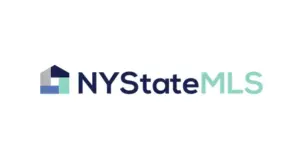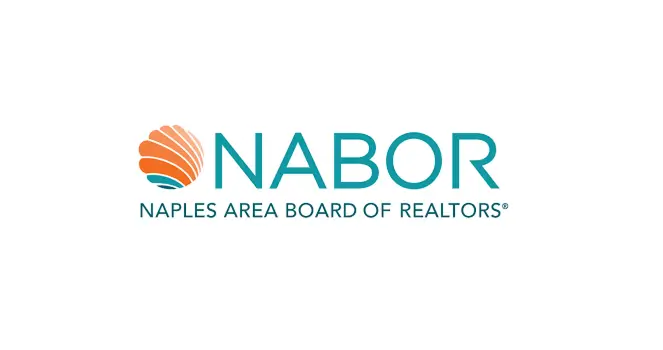If you’re working in Southwest Florida real estate, you’ve probably heard of the Naples Area Board of REALTORS. But there’s a lot more to this organization than most people realize. Whether you’re a new agent trying to figure out membership, a broker looking to integrate MLS data, or just curious about how the local market works, this guide breaks down everything you need to know.
What Makes NABOR Different
NABOR serves Collier County and parts of Lee County through a regional Multiple Listing Service that covers Naples, Bonita Springs, Fort Myers, and Cape Coral. With around 7,000 members, it’s not the biggest MLS in Florida, but it punches above its weight regarding technology and services.
The organization underwent a smart transformation in 2013. Instead of each local board maintaining separate systems, NABOR partnered with neighboring associations to create one unified Southwest Florida MLS. This means agents can access listings across multiple counties without juggling different platforms.
Membership Options That Actually Make Sense
NABOR doesn’t do one-size-fits-all membership. They’ve created several categories that fit different situations.
REALTOR Members are licensed agents or brokers who join NABOR as their primary board. When you become a primary member, you automatically enroll in Florida REALTORS and the National Association of REALTORS. That’s required if you want to use the REALTOR trademark.
MLS-Only Members work differently. These agents are primarily affiliated with another association but need access to the Naples area listings. You’ll pay less since you already cover state and national dues elsewhere.
Business Partners are divided into two groups. Allied members work in industries directly tied to transactions, such as title companies, mortgage lenders, and builders. They can vote and hold office, but can’t call themselves REALTORS. Affiliate members provide related services, such as home inspections or photography. They can’t vote or hold office, but still get valuable networking access.
There’s also a setup for unlicensed assistants. If you have clerical staff who need MLS access, they can get it under your broker account without becoming full members.
The Real Cost of Membership
Money talks, so let’s talk numbers. A new primary REALTOR member joining in January pays around $854 for the first year. That breaks down to roughly $260 in application fees, $157 for local NABOR dues, $116 for state dues, and $156 for NAR dues, plus mandatory assessments.
If you join later in the year, you’ll pay less because the fees are prorated. Secondary members of another board pay about $500 at the start of the year since they only cover local dues and the MLS fee.
Annual renewals happen on a calendar year cycle. You’ll get billed through the member portal, and you need to renew your NABOR, Florida REALTORS, and NAR memberships each year to stay active.
Technology That Actually Works
NABOR runs on CoreLogic Matrix, one of the country’s leading MLS platforms. The system is web-based and works on mobile devices, so you can search listings and update information from anywhere.
The platform includes some powerful integrated tools. Realist gives you access to tax records and public data across all Florida counties. You can pull detailed property information and generate mailing labels for farming-specific neighborhoods.
To show properties, NABOR uses Supra eKEY for electronic lockboxes. This works across the entire Southwest Florida region thanks to reciprocal agreements between the boards.
The mobile app (MLS-Touch) lets you work on the go. You can search listings, update statuses, and manage client communications from your phone.
Data Feeds for Tech Integration
Things get technical here, but it matters if you’re building a website or app.
NABOR supports the RESO Web API standard, the modern way to access MLS data. This replaced the older RETS system that many MLSs used for years. The Web API uses RESTful principles and delivers data in JSON format, making it easier for developers to work with.
The system provides three main types of data feeds:
IDX Feeds let brokers display each other’s active listings on their websites. NABOR calls this the Broker Reciprocity program. The feed includes at least three years of sold listing data and pending sales, though sellers can opt out of internet display. You have to refresh the data every 12 hours at minimum, but most vendors update it every 15-30 minutes.
VOW Feeds give registered clients access to more complete MLS data behind a secure login. Virtual Office Websites have stricter rules than IDX sites. You need user registration, audit trails, and specific disclaimers. However, clients get access to information that public IDX sites can’t provide.
Back-Office Feeds let brokerages download the complete dataset for internal use. This works well if you’re running analytics, powering a CRM, or need data for other productivity tools. The feed can include fields that aren’t allowed on public websites, but you must keep everything secure and use it only within your company.
Getting Access to the Data
The setup process is pretty straightforward once you know the steps. First, you must be an MLS participant or subscriber in NABOR or a reciprocal association. Then you submit an IDX or data feed request through the member portal.
NABOR commits to responding within five business days. That’s actually written into their rules, which is nice when you’re waiting to launch a new website.
Once approved, you get credentials for the data feed. With the RESO Web API through CoreLogic’s Trestle platform, you’ll receive an OAuth client ID and secret for secure access. For older RETS feeds, you get a URL with username and password.
The documentation is solid. Trestle provides API guides and a sandbox for testing. NABOR also publishes field glossaries since they have custom fields for local property types. You’ll find unique attributes like “Gulf Access Y/N” or specific community codes that matter in Southwest Florida.
What It Costs to Access the Data
Unlike some larger Florida MLSs that bundle data access into membership, NABOR charges separate licensing fees. The first year typically costs $500, which includes a $250 setup fee and $250 annual license. After that, you’re looking at $250 per year.
Some vendors break this down differently. For example, you might see it described as $15 per month, which is just another way of splitting the annual cost.
If you’re planning to maintain an IDX feed or data integration, budget a few hundred dollars yearly. It’s not free but reasonable compared to what you get in return.
Market Coverage You Need to Know
NABOR’s MLS covers most of Collier County, including Naples, North Naples, East Naples, Marco Island, Immokalee, and Ave Maria. The regional partnership extends coverage into Lee County for Bonita Springs, Estero, Fort Myers, and Cape Coral.
One quirk to note is Marco Island. The island has a small board and MLS, so NABOR’s official market statistics exclude Marco listings. That said, many Marco Island brokers join NABOR as secondary members for wider exposure, so you’ll often find Marco properties in the system anyway.
Active inventory fluctuates with the seasons. During peak season in early 2025, Naples area listings climbed above 7,000 properties. By late summer, the number settled around 4,800. If you include the MLS’s Fort Myers and Cape Coral side, total active listings regularly exceed 10,000 properties.
The database stores everything from single-family homes and condos to vacant land, commercial listings, and boat docks. Historical records include hundreds of thousands of sold and off-market properties.
Rules That Keep Everyone Honest
NABOR enforces detailed MLS rules that are updated regularly. The latest version took effect in August 2025, and you must follow them or face fines.
Accuracy matters. Agents must input new listings and status changes within 24-48 hours. Wrong information can lead to penalties, and the MLS checks for compliance.
The rules protect data ownership. Using MLS information for purposes outside of selling real estate requires permission from the listing broker. You can’t mine or share the data for unrelated business ventures with unauthorized recipients.
For IDX displays, you must include your brokerage name and logo, show the listing firm’s information on each property, and display MLS-approved disclaimers. Consumers must understand they’re on a broker’s website, not an official MLS or public site.
VOW sites have additional requirements around user registration, password security, and honoring seller opt-outs even behind the login.
What Happens When You Break the Rules
NABOR uses a Citation and Fine system that escalates based on severity. Minor infractions, like a late status change, might get a warning first. You’ll have one to three business days to fix the problem.
Many violations carry automatic fines if they are not corrected quickly. The MLS publishes a schedule that lists specific dollar amounts for each type of violation. Minor issues might cost $50, while serious breaches like unauthorized data sharing can cost hundreds.
Repeat offenders face doubled fines during the sanction period, which usually runs for a calendar year. If you don’t pay your fines, the MLS can suspend your access and electronic lockbox privileges until you settle.
The compliance team monitors IDX websites and other data uses. You have to give them administrative access to your site or provide samples on request. For IDX violations, you typically get 15 business days to fix issues before fines kick in.
Making NABOR Work for You
Getting started with NABOR depends on your situation. New agents in Southwest Florida should consider primary membership if this is where they’ll do most of their business. The upfront cost is higher, but you get full access to everything.
Agents from other areas who occasionally work Naples deals might prefer an MLS-only membership. This will save you money while still allowing you to access the listings you need.
For brokers building technology, the integration process moves quickly once paperwork is complete. The compliance team will review your staging site before final approval, checking for required logos, disclaimers, and proper attribution. Technical support is available through Florida Realtors Tech Helpline and CoreLogic’s Trestle team.
If everything is in order, most integrations go live within a week or two. The key is understanding the rules upfront and building your application to comply from day one.
Why This Matters for Your Business
The Naples Area Board of REALTORS isn’t just another trade association. It’s the gateway to doing business in one of Florida’s most active real estate markets. The regional MLS partnership means you get broader coverage without the hassle of multiple systems.
Whether you’re an agent looking to join, a broker setting up technology, or a developer building real estate applications, understanding how NABOR works gives you a competitive advantage. The market here moves fast, especially during the season. Having smooth access to accurate, timely data makes all the difference.
For more information about membership or technical questions, visit the NABOR website or contact their member services team directly. They’re responsive and helpful, which isn’t always true with larger organizations.
Table of Contents







